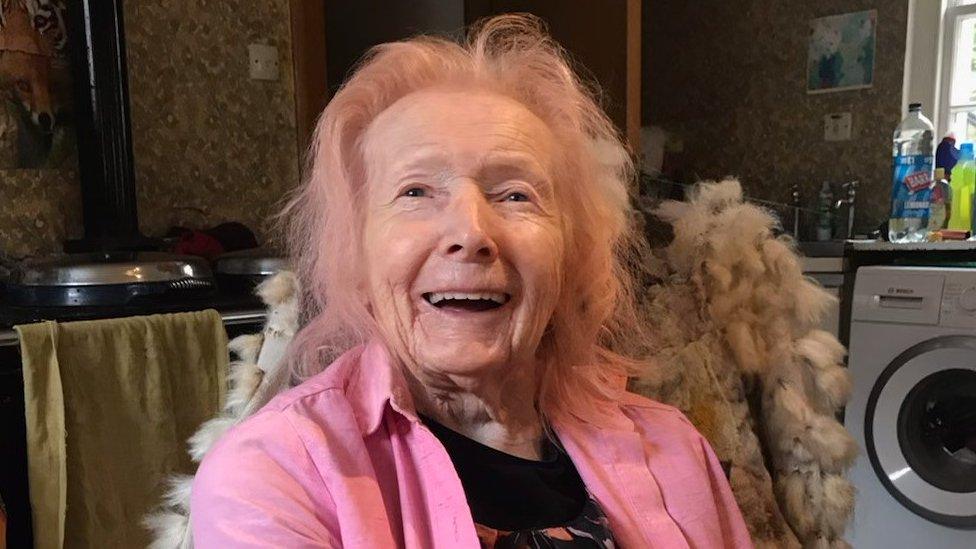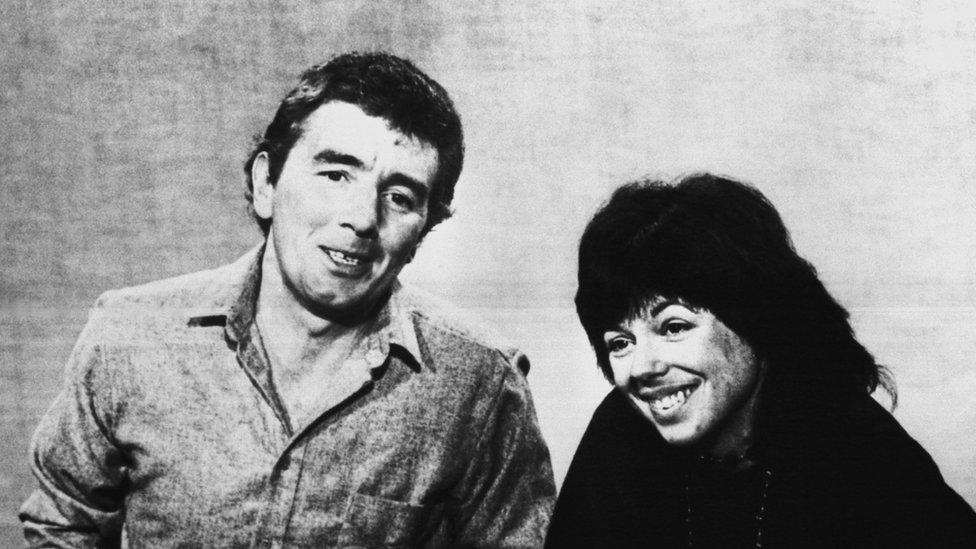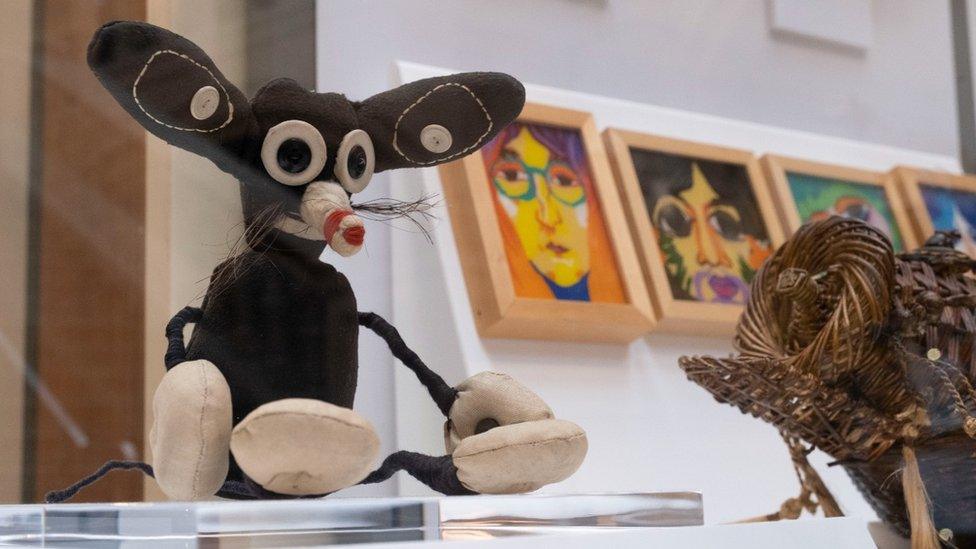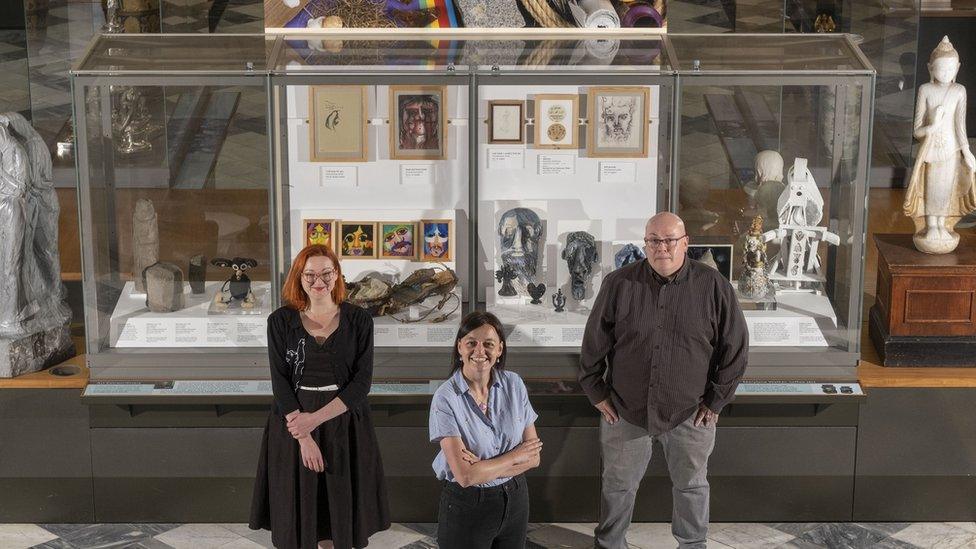Tributes to therapist who took art to Barlinnie
- Published

Joyce Laing spent most of her life in Pittenweem in Fife, where she founded a local arts festival
An art therapist best known for her role in rehabilitating some of Scotland's most violent prisoners has died.
Joyce Laing worked in Barlinnie Prison in Glasgow from 1973, where she introduced inmates including convicted murderer Jimmy Boyle to art.
The prison's special unit pioneered art therapy as a method of rehabilitation in the 1970s.
Ms Laing died on Sunday in her early 90s.
Born in Aberdeen, she studied at Gray's School of Art before becoming Scotland's first art therapist.
She worked in a tuberculosis ward where doctors were stunned that she could apparently predict when a patient was about to deteriorate just from their artwork.
Ms Laing said they would go from producing calm landscapes and drawings, to using agitated brush strokes and bright, violent colours.
She went on to work with patients in mental health wards and prisoners, most notably at the Barlinnie special unit.

She was a collector of "outsider art", which she preferred to call "art extraordinary"
The unit was opened to accommodate Scotland's most violent and unmanageable prisoners.
Claire Coia, a curator for Glasgow's Open Museum who has researched Ms Laing's life, said: "The prison governor didn't get it, but he knew the inmates were bored and had no structure.
"She introduced art to the special unit and it was used as a non-violent means of expression.
"For men from hard cultures, it was harder for them to connect with their feelings and it takes more courage than acting out of violence."
'Destructive creation'
In a BBC Radio Scotland interview in 2007, Ms Laing spoke about her experience there.
She said: "If you can channel that energy into positive creation instead of a destructive creation, then you're on to a winner.
"There's a strange thing [that] seems to happen - they get a kick out of it. Because I don't think they get much kick out of the destruction they do."

Convicted murderer Jimmy Boyle with wife Sara after his release from Barlinnie
Author and psychotherapist Sara Trevelyan married Jimmy Boyle, a convicted murder, in 1980 while he was an inmate in the Barlinnie special unit.
She met Ms Laing while visiting him towards the end of the 70s.
Ms Trevelyan said: "Jimmy was inspired by Joyce to go on a journey of expressing his talents through sculpture.
"You really noticed her presence in the community.
"When I first visited I expected a bland prison waiting room - but there were sculptures in the yard, a big mural downstairs in the cell block, and the inmates were encouraged to decorate their own rooms.
"Joyce saw how the work of each individual could express their inner state of being.
"She knew it was a key to transformation for many of these people."
Jimmy Boyle went on to become a successful sculptor and author.
'Genius'
Mike Nellis, an emeritus professor of criminal and community justice at the University of Strathclyde, met with Joyce in 2009 and 2010 while he was writing about the Barlinnie project.
He said: "I saw how crucial she was to the success of the unit.
"The unit had the most violent men in the Scottish prison system and she started something that no one foresaw - and she handled it.
"That was the genius of Joyce Laing."

The Mouse, created by an unknown artist and salvaged from a hospital bin
Following the Barlinnie exhibition in 1982, Ms Laing formed an interest in outsider art - art which is produced by untrained artists like children or mentally ill people.
She preferred to call it "Art Extraordinary", and armed with a small amount of funding, she explored asylum spaces around Scotland in search of it.
Ms Coia said: "She wanted to find art produced by 'compulsion' - but the doctors and nurses said there wasn't any since what their patients produced wasn't considered art by normal standards.
"Due to large asylum closures at the time, things were getting thrown away in skips.
"So Joyce went rummaging in bins and found the extraordinary art."
'Core of steel'
She discovered creations by many artists including Angus MacPhee and Adam Christie, who used everyday materials to create art while they were in hospital.
Curated objects include clothing woven from grass, embroidered hospital sheets, and stones carved into heads.
Mike Inglis, an artist and lecturer at Edinburgh College of Art, was a close friend of Joyce's over the last 15-20 years.
He said: "Joyce was a huge influence on me and completely changed my practice.

Claire Coia, Dr Cheryl McGeachan and Dr Tony Lewis at the Art Extraordinary exhibit in Kelvingrove
"She had a core of steel and was really interested in people - she would meet people at her gallery and speak to them for ages.
"She liked the rawness of the objects she collected.
"The artists had a lot of energy and just had to get it out using whatever they had."
Joyce donated her art collection of more than 1,100 pieces of art to Glasgow Museums in 2012.
A permanent display of Art Extraordinary opened at Kelvingrove Museum on Tuesday, external. It is the first ever permanent display at the museum.
In 2023, an exhibit celebrating 50 years of the Barlinnie artwork will open alongside it.